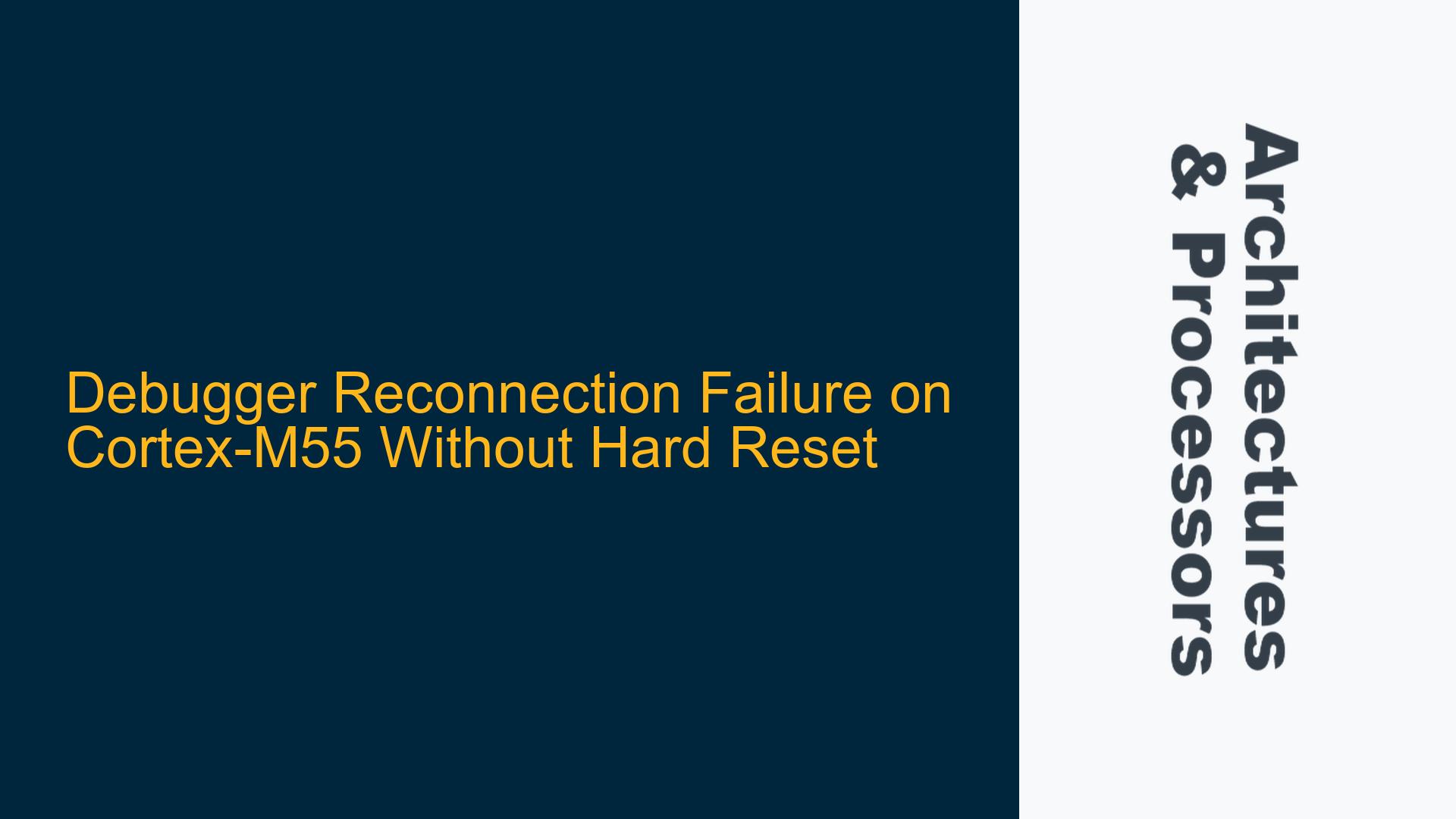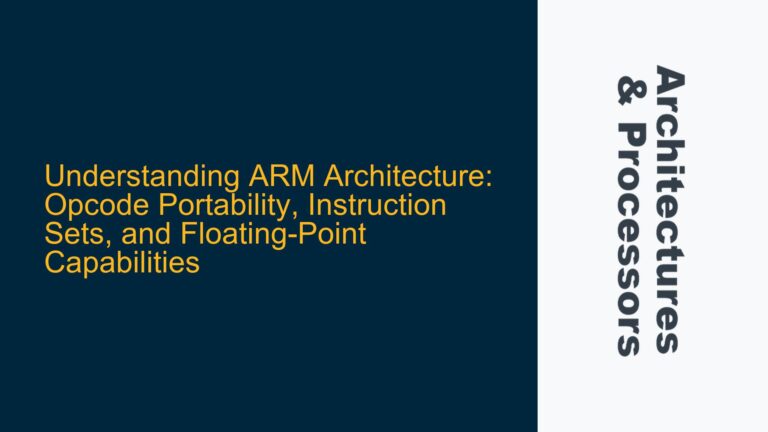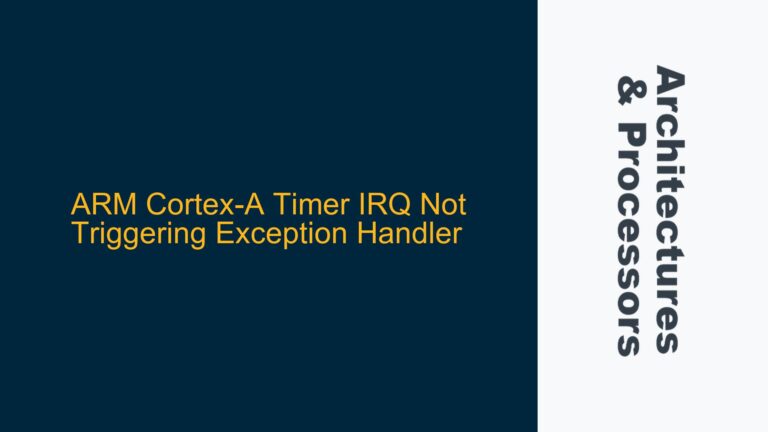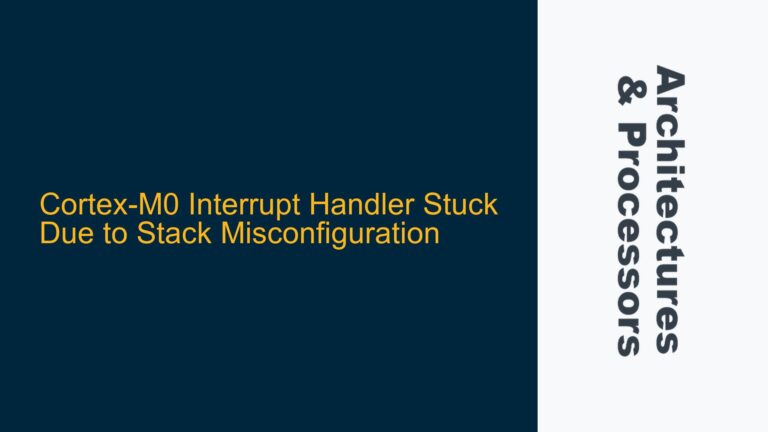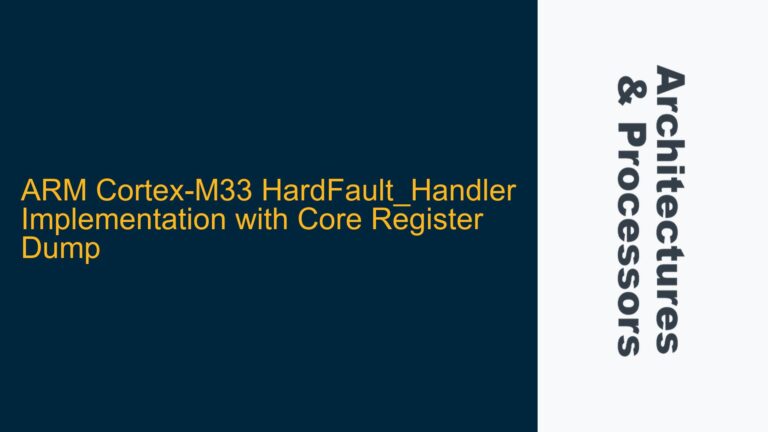ARM Cortex-M55 Debugger Reconnection Issue After Warm Reset
The Cortex-M55 is a highly capable processor designed for embedded systems, particularly in applications requiring machine learning and digital signal processing. However, during development and debugging, a critical issue arises where the debugger cannot reconnect to the Cortex-M55 after a warm reset (sysresetreq) without performing a hard reset. This issue manifests as a "Core cannot be stopped" error message, preventing the debugger from establishing a connection. The debugger logs reveal that the Debug Halting Control and Status Register (DHCSR) behaves inconsistently between the first and subsequent connection attempts. Specifically, the S_HALT bit (bit 0) in the DHCSR is not set during the second connection attempt, indicating a failure in the debug halt request mechanism.
The DHCSR is a critical register for debugging ARM Cortex-M processors. It controls the halting and stepping of the processor core during debugging. Writing 0xA05F0003 to the DHCSR enables debugging and requests a halt. The expected response is a readback value where the S_HALT bit is set (0x00000001), indicating that the core has halted successfully. However, in this case, the first readback value is 0x00130003, which includes the S_HALT bit, but the second readback value is 0x00110003, where the S_HALT bit is missing. This inconsistency suggests that the debug halt request is not being honored during the second connection attempt.
This issue is particularly problematic during iterative development, where frequent debugging sessions are required. A hard reset is often impractical, as it disrupts the system state and complicates debugging workflows. Understanding the root cause of this behavior and implementing effective solutions is essential for maintaining a smooth development process.
Debug Halting Control and Status Register (DHCSR) Inconsistency and Warm Reset Behavior
The Debug Halting Control and Status Register (DHCSR) is a key component of the ARM CoreSight Debug Architecture. It provides control over the processor’s debug state, including halting, stepping, and enabling debugging. The DHCSR is located at address 0xE000EDF0 and is accessible only in debug mode. Writing 0xA05F0003 to the DHCSR enables debugging and requests a halt by setting the C_DEBUGEN (bit 0) and C_HALT (bit 1) bits. The S_HALT bit (bit 0) in the readback value indicates whether the core has successfully halted.
In the observed behavior, the first write to the DHCSR results in a readback value of 0x00130003, which includes the S_HALT bit. This indicates that the core has halted successfully. However, the second write to the DHCSR results in a readback value of 0x00110003, where the S_HALT bit is missing. This suggests that the core is not halting as expected during the second connection attempt.
Several factors could contribute to this inconsistency. One possibility is that the warm reset (sysresetreq) does not fully reset the debug logic, leaving it in an inconsistent state. The ARM Cortex-M55 architecture includes a Debug Authentication Interface (DAI) that controls access to the debug features. If the DAI is not properly reset during a warm reset, it could prevent the debugger from regaining control of the core. Another possibility is that the debug logic is being affected by the state of the processor’s pipeline or cache. If the pipeline or cache is not properly flushed during the warm reset, it could interfere with the debug halt request.
Additionally, the behavior of the DHCSR could be influenced by the configuration of the processor’s low-power modes. If the processor enters a low-power mode during the warm reset, it might not respond to the debug halt request as expected. The Cortex-M55 includes a variety of low-power modes, such as Sleep, Deep Sleep, and Standby, each with different implications for debugging. If the debugger is not properly configured to handle these modes, it could result in the observed inconsistency.
Implementing Debug Logic Reset and Pipeline Flush for Reliable Debugging
To address the debugger reconnection issue on the Cortex-M55, a systematic approach is required to ensure that the debug logic is properly reset and the processor’s pipeline and cache are flushed during a warm reset. The following steps outline a comprehensive solution to this problem:
Step 1: Verify Debug Authentication Interface (DAI) Configuration
The Debug Authentication Interface (DAI) is responsible for controlling access to the debug features of the Cortex-M55. Ensure that the DAI is properly configured to allow debug access after a warm reset. This includes verifying that the DAI is not locked or in a state that prevents the debugger from regaining control. If necessary, modify the DAI configuration to ensure that it is reset during a warm reset.
Step 2: Implement Debug Logic Reset Sequence
To ensure that the debug logic is properly reset during a warm reset, implement a debug logic reset sequence in the startup code. This sequence should include writing to the appropriate debug registers to reset the debug logic to a known state. For example, writing to the Debug Exception and Monitor Control Register (DEMCR) can help reset the debug logic. Additionally, ensure that the DHCSR is properly initialized after the reset sequence.
Step 3: Flush Processor Pipeline and Cache
The state of the processor’s pipeline and cache can affect the behavior of the debug halt request. Implement a pipeline and cache flush sequence in the startup code to ensure that the processor is in a consistent state after a warm reset. This sequence should include instructions to flush the pipeline and invalidate the cache. For example, the DSB (Data Synchronization Barrier) and ISB (Instruction Synchronization Barrier) instructions can be used to ensure that the pipeline is flushed and the cache is invalidated.
Step 4: Configure Low-Power Mode Handling
Ensure that the debugger is properly configured to handle the Cortex-M55’s low-power modes. This includes configuring the debugger to wake the processor from low-power modes and ensuring that the debug halt request is honored in these modes. Modify the debugger settings to include the necessary low-power mode handling, and verify that the processor responds to the debug halt request as expected.
Step 5: Verify Debugger Connection and Halt Behavior
After implementing the above steps, verify that the debugger can successfully reconnect to the Cortex-M55 after a warm reset. This includes checking that the DHCSR readback value includes the S_HALT bit and that the core halts as expected. Use the debugger logs to confirm that the debug halt request is being honored and that the core is in a consistent state.
Step 6: Optimize Debug Workflow
To further optimize the debugging workflow, consider implementing additional debug features such as breakpoints, watchpoints, and trace capabilities. These features can help identify and resolve issues more efficiently, reducing the need for frequent debugger reconnections. Additionally, consider using a debugger with advanced features such as real-time trace and profiling to gain deeper insights into the system’s behavior.
By following these steps, the debugger reconnection issue on the Cortex-M55 can be effectively resolved, ensuring a smooth and reliable debugging experience. This approach not only addresses the immediate issue but also provides a foundation for robust debugging practices in future projects.
